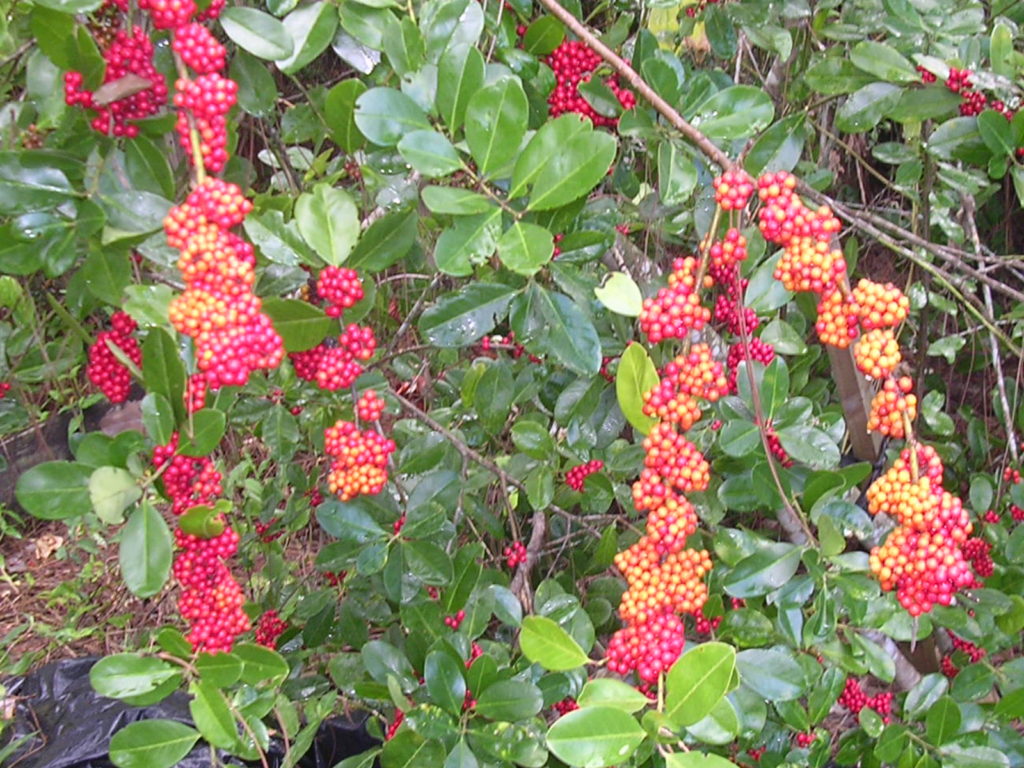
Dahoon Holly
Ilex cassine
Hollies are what people think of when they hear the word “dioecious”. This simply means that each plant has either male or female flowers. The female flower has a small swelling (ovary) at the base and no orange anthers on the end of the stamens.
By planting three or more dahoon hollies in a cluster, you will be sure to have at least one male to ensure pollination and lots of red berries with viable seed inside. You can always remove all but one male. Female plants will produce berries, but without a male plant nearby, the seed will be infertile.
Dahoon Holly is found along the edge of swamps from the keys throughout the Southeastern US Coast. It prefers moist, acid soils where it may receive short term flooding yet will tolerate drought. Dahoon Holly grows to 30 or more feet and can be easily kept at 15 feet or less. It will tolerate a small amount of salt air and very little salt water flooding.
If there is a wet area in your yard, try planting a group of Dahoon hollies mixed with Pond Apple, Bald or Pond Cypress, Swamp Redbay, Red Maple, Button Bush, Swamp Fern, and other wetland species. The trunk becomes clear of branches and white with red lichen as the tree gets taller. A small grove of Dahoon Holly with a path going through it and a bench to sit on can be a magical part of the yard.
The small berries ripen in early fall and are a major food source for birds and other animals. The fruit are not poisonous to humans yet not tasty.